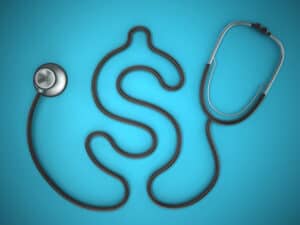Statistics Canada reports that Canada’s job market is within 720,000 positions of the February 2020 level following the addition of 378,000 new jobs last month. The number of jobless declined for the fourth consecutive month, the unemployment rate in September fell to 9.0%.
While many Canadians have returned to work, millions are still out of jobs or unable to work. Meanwhile, the Canada Emergency Response Benefit (CERB) ended too. People who still need income support are transitioning to Employment Insurance (EI).
CERB replacement
However, not everyone can transition or qualify despite the relaxation in rules. If you don’t qualify for EI, you can apply for the Canada Recovery Benefit (CRB) that will pay a total of $13,000 in taxable benefits. Like the EI, CRB claimants must be available and looking for work. Also, an applicant must accept work when it is reasonable to do so.
The CRB is one of three new relief benefits the government has introduced to help Canadians impacted by COVID-19. Canada would be spending billions of dollars on replacing CERB with a suite of income support programs. The Canada Revenue Agency (CRA) is in charge of processing the applications and releasing the benefits.
Eligibility requirements
You’re eligible for CRB if you either stopped working due to COVID-19 or your income fell by at least 50%. The CERB replacement new will provide $500 weekly for up to 26 weeks, and payments are in two-week batches.
In case you’re sick but don’t have paid sick leave, you can apply for the Canada Recovery Sickness Benefit (CRSB). Similarly, for parents who need to look after children who can’t go to school or daycare, the Canada Recovery Caregiving Benefit (CRCB) is available. The amount and program period are the same as the CRB.
As of October 12, 2020, the CRA has begun accepting CRB applications. About 240,000 Canadians applied on the first day. You can apply online through the CRA’s portal or by phone. Make sure all your personal information is correct and register for auto-deposit.
Income after CRB
One of the safest assets to own today is Brookfield Renewable Partners (TSX:BEP.UN)(NYSE:BEP). Investors are pleased with the 53.33% year-to-date gain despite the market uncertainties. This $13.11 billion renewable energy company also pays a respectable and safe 3.21% dividend.
Interest in companies that generates renewable power is growing. You ride the green movement bandwagon and benefit from the imminent growth of Brookfield Renewable. Capital-rich Brookfield Asset Management backs its infrastructure business.
Currently, Brookfield Renewable has an investment portfolio of more than 5,300 power-generating facilities globally. The total worth of this operating renewable generation capacity consisting of hydroelectric, solar, and wind power is around $50 billion. Likewise, it’s gearing up for the next phase of growth.
The growth estimate for Brookfield Renewable in the next five is 59.6% (per annum). Now is an excellent time to be an ESG investor. This utility stock is a sure-fire winner regardless of the market environment.
No expiration date
After CERB and CRB, Canadians are better off replacing the temporary benefits with lasting income. You can do so if you’re regular income is back. Save to invest and start creating passive income without expiration dates.








